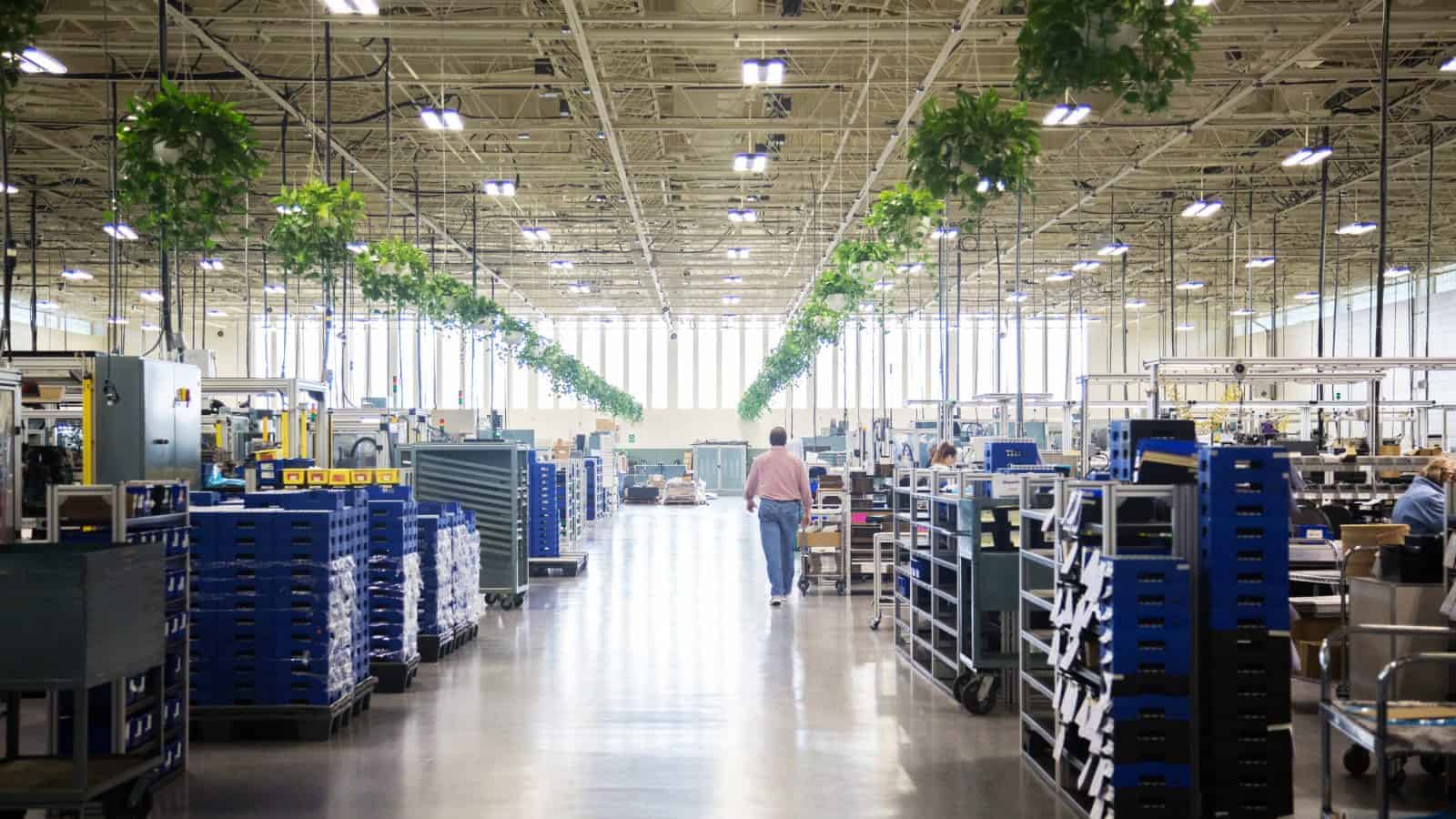“Mountaire Cares” Is More Than Just a Slogan

“Making a difference” might be the best description of what Mountaire Farms does. Founded in 1914, the fifth-generation family-owned chicken processing company has a long history of helping its communities thrive.
Mountaire Cares: Through its Mountaire Cares program, the company’s employees are committed to changing lives for the better.
- “The Mountaire Cares program was created to fulfill three main core pillars: how are we faithful to our people, how are we faithful to our communities and how can we look to be faithful to the future,” said Mountaire Cares Director JR LaPearl.
Meals for thousands: One of Mountaire Farms’ biggest events during the year is its Meals for Thousands program, where the company partners with local churches, food banks and nonprofit organizations to provide meals for families in need at Easter, Thanksgiving and Christmas.
The program had humble beginnings 28 years ago, with Roger Marino, who was PR and community relations director at Mountaire, leading the group to provide 300 meal boxes at Thanksgiving. The company has distributed more than 1 million boxes since then.
- For this year’s Easter event, the company’s employees and other volunteers packed 15,000 meal boxes, each of which contained a Mountaire roaster chicken; vegetables; macaroni and cheese; mashed potatoes and gravy; and brownies—enough food to feed a family of four
- “Our employees really enjoy being a part of this effort to give back to the community,” LaPearl said. “What I love about these events is that they bring people together to share love and kindness to one another.”
Read the full story here.
Voluntary Climate Disclosures Show That SEC Rule Is Redundant

An aggressive climate-disclosure rule proposed by the Securities and Exchange Commission hasn’t yet become law, but many companies are already adopting climate-disclosure practices and methodologies, according to The Wall Street Journal (subscription).
- Companies’ efforts to adopt climate strategies appropriate for their businesses, as well as the evolving methodologies for such reporting, are clear indications that the SEC’s costly and overly restrictive climate-reporting mandate is not necessary, said NAM Senior Director of Tax and Domestic Economic Policy Charles Crain.
What’s going on: “The Securities and Exchange Commission’s rule—which would require public companies to report climate-related risks and emissions data, including so-called Scope 3 emissions that come from a company’s supply chain—is expected to be brought in soon. … [But] [s]ome businesses have for years pursued carbon-related goals without the government forcing their hand,” according to the Journal.
- Manufacturers have led the move toward sustainability, with many having already begun to track and curb their emissions and work with their suppliers to do the same.
Why it’s important: “[G]roups from private manufacturers to egg farmers have balked at the cost and complexity of complying with a Scope 3 mandate from the SEC. The regulator has estimated its plan will raise the cost to businesses of complying with its overall disclosure rules to $10.2 billion from $3.9 billion, an additional cost of about $530,000 a year for a bigger business.”
- Manufacturers have urged the SEC to drop the Scope 3 reporting mandate. Some say it unfairly “creates a risk of double counting, because the supply-chain emissions of one company are the in-house emissions of another,” according to the Journal.
- While SEC Chair Gary Gensler told the House Committee on Financial Services earlier this month that the rule is not intended to burden private companies, “[m]andatory Scope 3 reporting would represent a costly, uncertain and ultimately infeasible standard for public issuers as well as the small and privately held businesses within their supply chains,” NAM Managing Vice President of Tax and Domestic Economic Policy Chris Netram told the same committee.
The last word: “Manufacturers [are] leaders in combatting climate change and making the necessary disclosures about this important work,” said Crain.
- “The SEC’s attempt to mandate a top-down, uniform approach to this evolving field would dramatically increase costs and legal liability for manufacturers—without improving information availability for investors or helping companies achieve their sustainability goals.”
NAM to EPA: Don’t Change NAAQS Standards
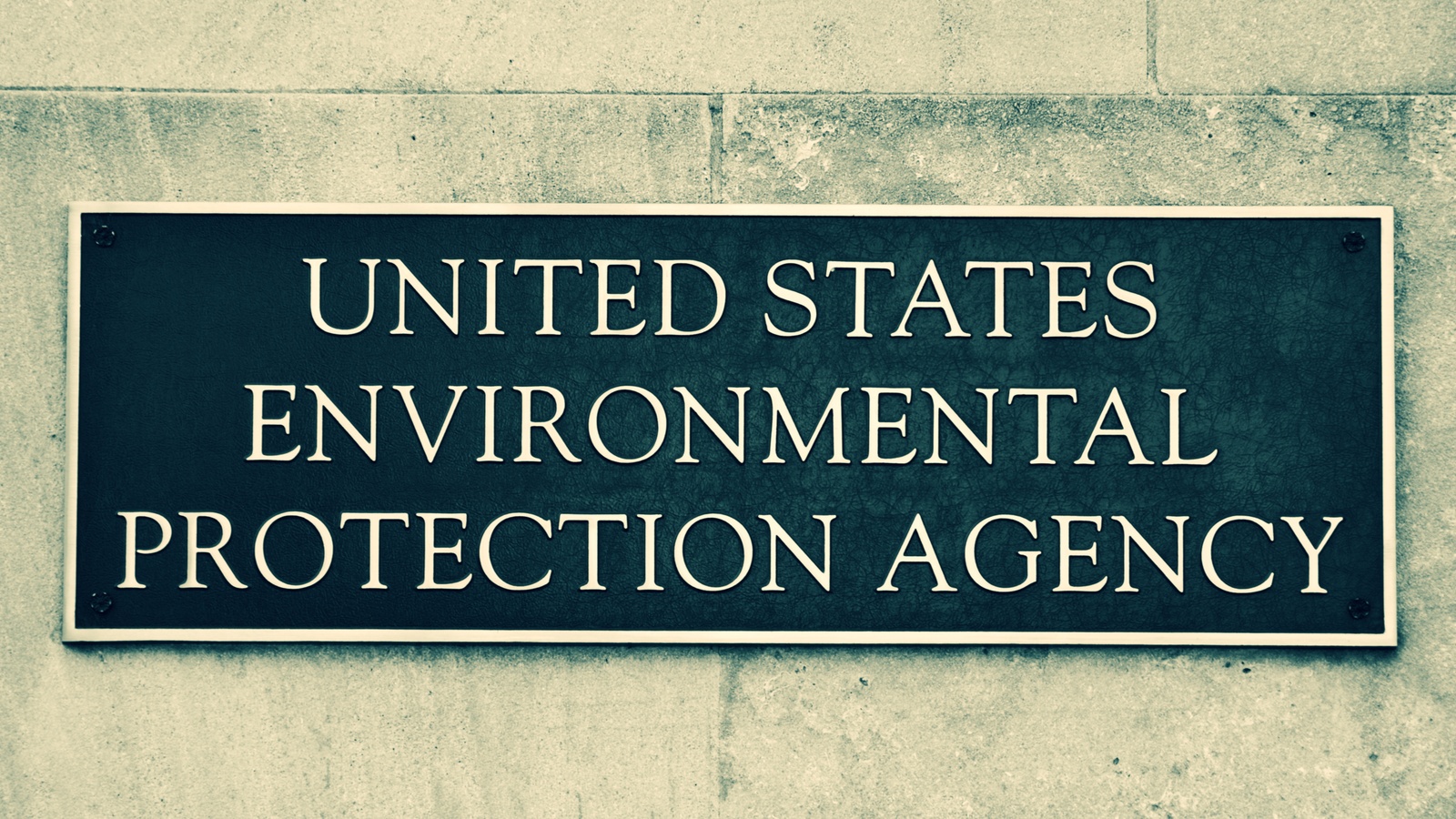
The NAM continues to push back against proposed revisions to the National Ambient Air Quality Standards for particulate matter.
What’s going on: On Tuesday NAM Director of Energy and Resources Policy Chris Morris urged the Environmental Protection Agency to withdraw its recent proposal to lower the primary annual particulate matter standard from 12.0 µg/m3 to between 8.0 and 10.0 µg/m3.
The big picture: “Manufacturers in the U.S. have become leaders in environmental stewardship and sustainability,” Morris pointed out.
- “Across the board, levels of major pollutants have declined dramatically, and the United States is outpacing our global competitors in air quality improvements,” he said.
- “According to the EPA, the U.S. has reduced six common NAAQS pollutants, including PM5, by 78% between 1970 and 2020. Additionally, the EPA data show that PM2.5 air quality has improved 43% between 2000 and 2020.”
The new regulations: The EPA’s new standards would impose a substantial economic burden on manufacturers, Morris continued.
- “First, there is the direct economic exposure manufacturers will face, which is a measure of the gross value added or employment in the manufacturing sector that could be affected or [placed] at risk,” he said.
- “Second is the indirect economic exposure of manufacturing as a result of a stricter PM5 standard. This refers to the effects on the sector as the consequences are felt throughout the supply chain due to decreased overall investment.”
By the numbers: The EPA has estimated the total cost of the controls required for compliance with the proposed standard at up to $1.8 billion—and that figure could go higher, the agency admitted.
- This expensive policy will lead to job losses and fewer new manufacturing facilities, as well as fewer modernizations and expansions to existing facilities, Morris continued.
Unattainable standards: What’s more, some areas in the U.S. are “in non-attainment” with the current PM2.5 standard, so a stricter standard will only put them further out of compliance, Morris told the EPA.
What should be done: To keep U.S. manufacturing competitive and to safeguard well-paying jobs, Morris said, the EPA should maintain the current annual particulate-matter standard of 12.0 µg/m3 and withdraw its proposal.
The NAM in action: The NAM has been rallying manufacturers across the country to speak out against the EPA’s proposal and calling on Congress to oppose these harmful regulations.
- During the 2023 State of Manufacturing address last month, Timmons announced the launch of a nationwide campaign to maintain these standards in order to protect manufacturers.
Manufacturers Push Back on Harmful EPA Air Proposal
Washington, D.C. – Following the National Association of Manufacturers comment submission to the Environmental Protection Agency on its proposed rule to impose more stringent National Ambient Air Quality Standards for Particulate Matter 2.5., NAM Director of Energy and Resources Policy Chris Morris released the following statement:
“Improving air quality in the U.S. is a key priority for manufacturers, which is why they have invested heavily in new processes and technologies that have made manufacturing cleaner and more sustainable than ever. These efforts have contributed to the U.S. successfully achieving some of the lowest levels of exposure to PM 2.5 globally, including lower PM 2.5 levels than France, Germany, Japan and the U.K.
“The EPA’s proposal would significantly increase the number of industrial centers and population hubs in nonattainment areas. That could halt new investment, stop operations in some circumstances and cost jobs.
“Significantly, the NAM’s Outlook Survey for the first quarter of 2023 found that more than 55 percent of manufacturers anticipate the new standard would raise their cost of compliance, and one out of three manufacturers anticipate that the new standards would lead to increased permitting challenges and restrict investment and facility expansion plans.
“The NAM urges EPA to maintain the existing standard as its proposal will hinder domestic manufacturing growth, does not adequately assess the economic and job consequences or identify feasible steps to achieve attainment with new standards.”
-NAM-
The National Association of Manufacturers is the largest manufacturing association in the United States, representing small and large manufacturers in every industrial sector and in all 50 states. Manufacturing employs nearly 13 million men and women, contributes $2.81 trillion to the U.S. economy annually and accounts for 55% of private-sector research and development. The NAM is the powerful voice of the manufacturing community and the leading advocate for a policy agenda that helps manufacturers compete in the global economy and create jobs across the United States. For more information about the NAM or to follow us on Twitter and Facebook, please visit www.nam.org.
New Survey: Manufacturers Want Increased Trade with Europe
New Regulations and Taxes Will Hurt Expansion
London, U.K. – As the National Association of Manufacturers’ Competing to Win Tour begins its second week of bolstering strategic alliances across Europe, the association released findings from its Q1 2023 Manufacturers’ Outlook Survey. The survey found that expanding trading opportunities with Europe is a top priority for manufacturers, with more than 77% of respondents supporting negotiating new agreements with European nations.
“At a time when democracy and free enterprise are under attack from forces around the world, America can provide the leadership needed to defend our values, our institutions and our way of life,” said NAM President and CEO Jay Timmons. “By advancing an ambitious trade agreement agenda, we can ensure that the U.S.—and not competitors like China—writes the rules for the global economy and trading system. That has been the focus of our conversations with government, association and business leaders across Europe over the past week.”
The survey also continues to illustrate the need for Washington to enact policies that support the sector’s competitiveness as businesses face record job openings and increased production and input costs.
“With geopolitical turmoil and a banking crisis injecting further uncertainty into the economy, policymakers must act with urgency on key tax, trade, permitting and regulatory proposals if they want to help manufacturers in America fend off a recession,” said Timmons.
Background: Manufacturers have called on Congress and the White House to address key tax, trade, and permitting policies in recent months and have pressed lawmakers to work across the aisle to move legislation. The NAM conducted the survey from Feb. 21 to March 7, 2023.
Key Findings:
- Of companies that are engaged in international trade, nearly two-thirds of manufacturers said that Europe was either a somewhat or very important market for their company. With that in mind, 77.7% would support U.S. efforts to launch market-opening trade agreement negotiations with countries in Europe.
- Nearly three-quarters of respondents (74.9%) listed attracting and retaining a quality workforce as a primary business challenge, with increased raw material prices (60.1%) and supply chain challenges (55.8%) the next biggest impediments.
- More than 90% of respondents said that higher tax burdens on manufacturing income would make it difficult for their companies to expand their workforce, invest in new equipment or expand their facilities. Similarly, 93.9% suggest that increased regulatory burdens would weaken their ability to invest in their workers, equipment or facilities.
- More than 74% of respondents said that permitting reform—which would simplify and speed up the approval process for new projects—would be helpful to their manufacturing company, allowing them to hire more workers, expand their business or increase wages and benefits.
- More than 55% of respondents said that new proposed air standards from the Environmental Protection Agency would raise their costs of compliance, with roughly one-third suggesting that it would lead to increased permitting challenges and lessen investment and facility expansion plans.
Conducted by NAM Chief Economist Chad Moutray, the Manufacturers’ Outlook Survey has surveyed the association’s membership of 14,000 manufacturers of all sizes on a quarterly basis for the past 25 years to gain insight into their economic outlook, hiring and investment decisions and business concerns.
The NAM releases these results to the public each quarter. Further information on the survey is available here.
-NAM-
The National Association of Manufacturers is the largest manufacturing association in the United States, representing small and large manufacturers in every industrial sector and in all 50 states. Manufacturing employs nearly 13 million men and women, contributes $2.81 trillion to the U.S. economy annually and accounts for 55% of private-sector research and development. The NAM is the powerful voice of the manufacturing community and the leading advocate for a policy agenda that helps manufacturers compete in the global economy and create jobs across the United States. For more information about the NAM or to follow us on Twitter and Facebook, please visit www.nam.org.
NAM Speaks Out Against New EPA Regulations

Manufacturers across the United States have long been leading the way on sustainability. From outpacing international competitors on emission reductions to making investments in clean technologies, the industry has implemented best practices for others to use and blazed a trail for them to follow.
NAM Director of Energy and Resources Policy Chris Morris emphasized manufacturers’ track record during a hearing before the Environmental Protection Agency last week, where he explained to policymakers that their proposed air quality rules would stifle rather than enhance manufacturers’ efforts. Here’s what he had to say.
A record of leadership: “Our industry has championed environmental stewardship at every turn, and our members have invested heavily in new processes and technologies that have made manufacturing in the U.S. cleaner and more sustainable than ever,” said Morris.
- “This innovation in the manufacturing sector has played a key role in the reduction of air pollution we have seen over the last 50 years.”
Manufacturers’ impact: “Across the board, levels of major pollutants have declined dramatically, and we are outpacing our global competitors in air quality improvements,” said Morris.
- “According to the EPA, the U.S. has reduced six common NAAQS pollutants, including PM2.5, by 78% between 1970 and 2020.”
- “Additionally, EPA data shows that PM2.5 air quality has improved 44% since 2000. Manufacturers are committed to ensuring that progress continues.”
The challenge: New proposed regulations from the EPA would have a number of negative effects, Morris noted.
- Tighter air quality standards would make permitting more difficult, raise compliance costs and make it harder for manufacturers in the United States to compete with companies abroad—especially at a time when manufacturers are concerned about the country’s economic outlook.
The path forward: Morris urged policymakers to ensure that current regulations are fully implemented before they propose new ones, and to work together with innovative manufacturers on smart solutions.
- “The U.S. has some of the best environmental standards in the world, and American manufacturers are consistently reducing emissions, conserving critical resources, protecting biodiversity, limiting waste and providing safe products and solutions so others in our country can do the same,” said Morris.
- “But in order to maintain our environmental leadership, we need better regulations.”
The last word: “In our view, environmental protection and a thriving economy are not mutually exclusive,” said Morris. “We can have both—but it requires working together toward a constructive solution. Manufacturers are committed to smart, strong environmental safeguards and improving the lives of all Americans so that no one—and no community—is left behind.”
NAM to FAR Council: Rescind Proposed Climate Rule
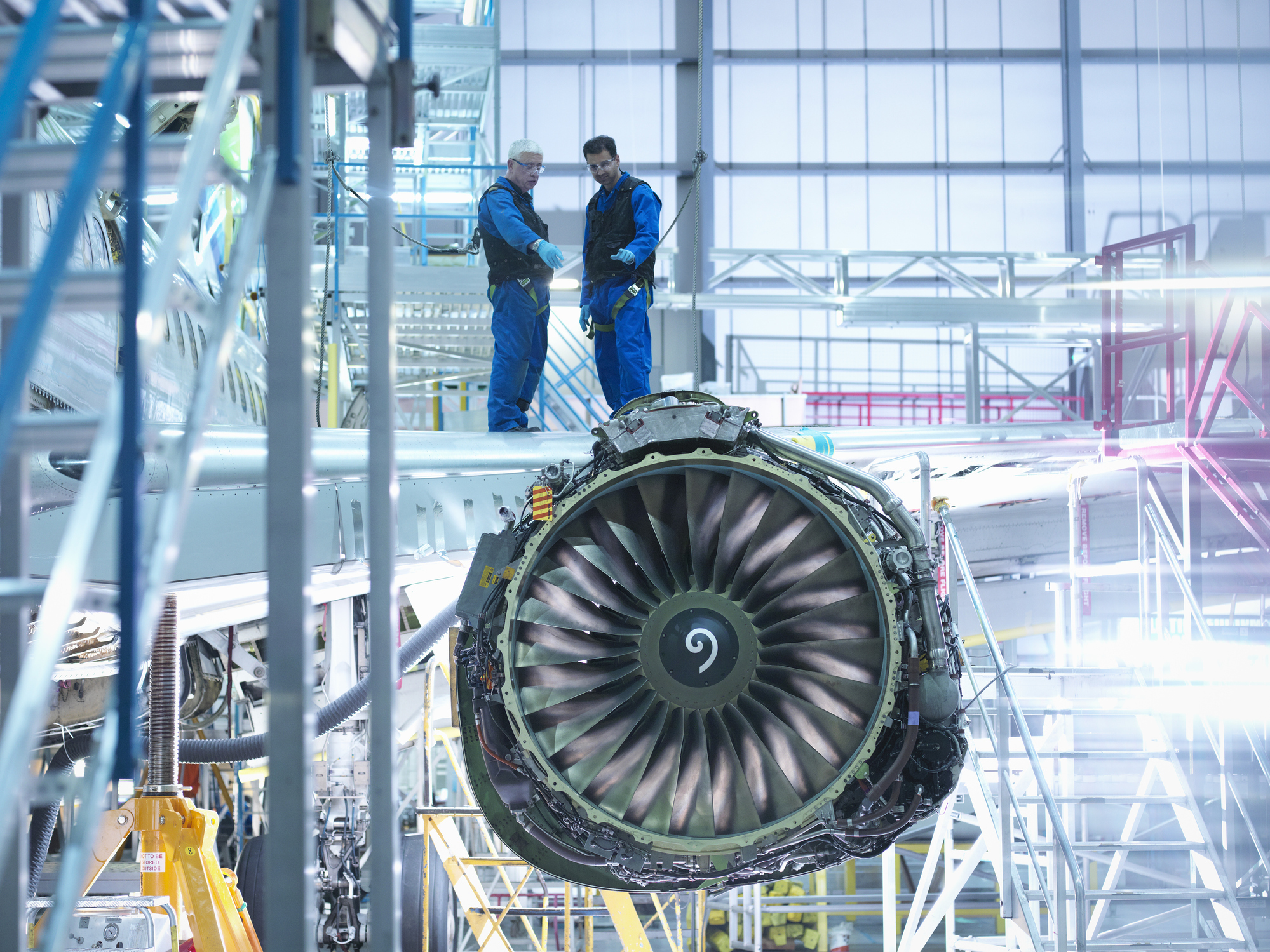
A draft rule to force federal contractors to make specific and detailed climate disclosures is burdensome, unrealistic and costly to manufacturers. It should be rescinded completely, the NAM told the Federal Acquisition Regulatory Council this week.
The background: In November, the FAR Council—which is composed of the Defense Department, the General Services Administration and NASA—proposed a rule to require climate disclosures from federal contractors, many of whom are manufacturers. The proposed rule would require contractors with more than $50 million in annual federal contract obligations to:
- Disclose their greenhouse gas emissions, including so-called Scope 3 emissions (those attributable to the suppliers and customers throughout a company’s value chain);
- Set targets to reduce their greenhouse gas emissions within a decade (including Scope 3 emissions) based on standards set forth by a third-party nonprofit organization, the Science-Based Targets initiative, and get the targets validated by SBTi; and
- Disclose their climate-related financial risks pursuant to a framework written by a second nonprofit group, the Task Force on Climate-Related Financial Disclosures, and submit those risk disclosures to yet another nonprofit (CDP, formerly the Carbon Disclosure Project).
Why it’s a problem: Compliance with the proposed rule would be difficult, if not wholly unfeasible, prohibitively expensive and time-consuming, NAM Managing Vice President of Tax and Domestic Economic Policy Chris Netram told the FAR Council. It would also impact small businesses within federal contractors’ supply chains given the rule’s focus on Scope 3 disclosures and target setting.
- “The proposed rule would impose significant costs on manufacturers as they work to meet the complex—and in many cases impractical or impossible—requirements of the rule,” Netram said.
- “As a result, manufacturers providing critical goods and services to the federal government, as well as the businesses throughout their supply chains, will be directly and adversely impacted … The national security of the United States could likewise be harmed, as critical contractors could be disqualified from supplying the military, and the required disclosures could expose sensitive information to America’s adversaries.”
What can be done: The FAR Council should rescind the proposed rule in its entirety, Netram said, but if it is intent on making changes, “it must re-propose a rule with substantial revisions to make its requirements more cost-effective and workable for federal contractors and more narrowly tailored to the actual climate-related risks to which the federal government is exposed.”
NAM Pushes Back on Harmful New Air Regulations
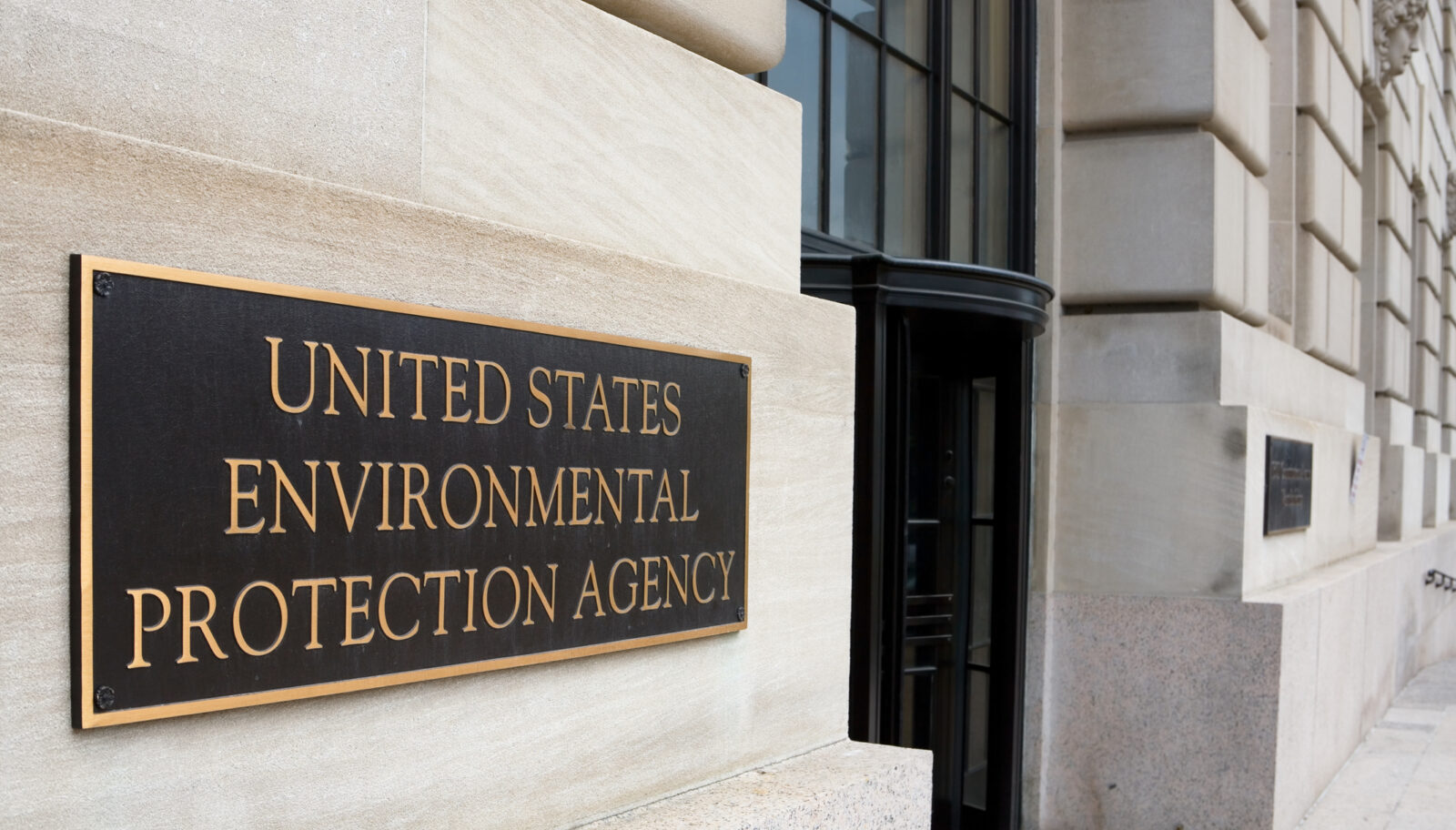
Manufacturers have long led the way in efforts to reduce air pollution and improve air quality. Yet, new proposed regulations from the federal government will work against these efforts instead of bolstering them, stymying critical progress and destabilizing economic growth at a time when both are more important than ever.
The challenge: The Environmental Protection Agency is considering a new rule that would impose stricter air standards on particulate matter known as PM2.5 (i.e., particles that measure two and a half micrometers or less in diameter). This rule would enact significant top-down restrictions, forcing manufacturers to change their operations abruptly and without any support.
The reality: For years, manufacturers across all sectors have been developing smart, innovative ways to use energy, water and other resources more sustainably—all while boosting economic growth and creating good jobs at the same time.
- Today, manufacturing in the U.S. is cleaner and greener than at any other time in history, largely due to a revolution in how manufacturers produce, use and recycle energy and resources.
- Across the board, levels of major pollutants have declined dramatically over the past few decades. Thanks to existing regulations and a culture of innovation, the U.S. is far outpacing global competitors in environmental stewardship.
By the numbers: According to the EPA, the U.S. reduced six common pollutants covered by National Ambient Air Quality Standards, including PM2.5, by 78% between 1970 and 2020. In fact, PM2.5 levels alone have dropped a full 44% since 2000.
The impact: These new regulations could be devastating for manufacturers and for the climate. Here are just a few of the negative repercussions:
- An additional regulatory burden on businesses will drain resources from innovative manufacturers, posing additional hurdles to the investment in research and development that fuels progress in energy efficiency and climate action.
- Making permitting harder could also jeopardize new clean energy projects that America needs to address climate change.
- The standards will hinder onshoring, resulting in continued manufacturing abroad—which is less clean than manufacturing in the U.S. The EPA’s proposal undercuts U.S. competitiveness and will not further the goal of global emissions reduction.
- New regulations could damage an already-slowing economy, increasing costs and constraining job growth at a time when Americans are grappling with record inflation.
Our view: Rather than imposing new and unnecessary obligations on manufacturers, the federal government should focus on enforcing the strong regulations that are already in place and give manufacturers the space to find better solutions.
- “The EPA’s announcement . . . [about reconsidering] the PM 2.5 standard will only further weaken an already slowing economy,” said NAM President and CEO Jay Timmons. “Let manufacturers do what they do best: innovate and deploy modern technologies to protect the environment, while creating jobs and strengthening the economy.”
NAM in action: The NAM is rallying manufacturers to speak out against the EPA’s proposal and calling on Congress to oppose these harmful regulations.
- Manufacturers can show their support by sending an email to decision makers in Washington, explaining the real impact of this damaging proposal and urging them to stand up against unnecessary regulations.
Join in: There is an EPA hearing to discuss the proposal on Feb. 21. To participate, be sure to sign up soon—the registration deadline is Feb. 16.
Manufacturers: Improving Air Quality Is a Top Priority; EPA Announcement Is the Wrong Approach
Washington, D.C. – Following the Environmental Protection Agency’s announcement that it will reconsider National Ambient Air Quality Standards for particulate matter, National Association of Manufacturers President and CEO Jay Timmons released the following statement:
“Improving air quality in the U.S. is a priority for manufacturers, and we’ve worked for years to make progress in delivering some of the cleanest manufacturing processes in the world. Based on the EPA’s own data, air quality has improved by more than 30% over the past 20 years, even as production and energy consumption have increased.
“The EPA’s announcement today to reconsider the PM 2.5 standard will only further weaken an already slowing economy. It will push states and localities into a nonattainment designation, which will halt new investment, stop operations in some circumstances and cost jobs. Manufacturers are already concerned about the threat of a recession—62% believe that the U.S. will officially slip into a recession in 2023, according to the Q4 2022 NAM Manufacturers’ Outlook Survey released yesterday.
“Today’s announcement is the wrong approach. Let manufacturers do what they do best: innovate and deploy modern technologies to protect the environment, while creating jobs and strengthening the economy.”
-NAM-
The National Association of Manufacturers is the largest manufacturing association in the United States, representing small and large manufacturers in every industrial sector and in all 50 states. Manufacturing employs more than 12.9 million men and women, contributes $2.77 trillion to the U.S. economy annually and accounts for 55% of private-sector research and development. The NAM is the powerful voice of the manufacturing community and the leading advocate for a policy agenda that helps manufacturers compete in the global economy and create jobs across the United States. For more information about the NAM or to follow us on Twitter and Facebook, please visit www.nam.org.
Operating on Sunshine: Sealed Air Invests Big in Solar
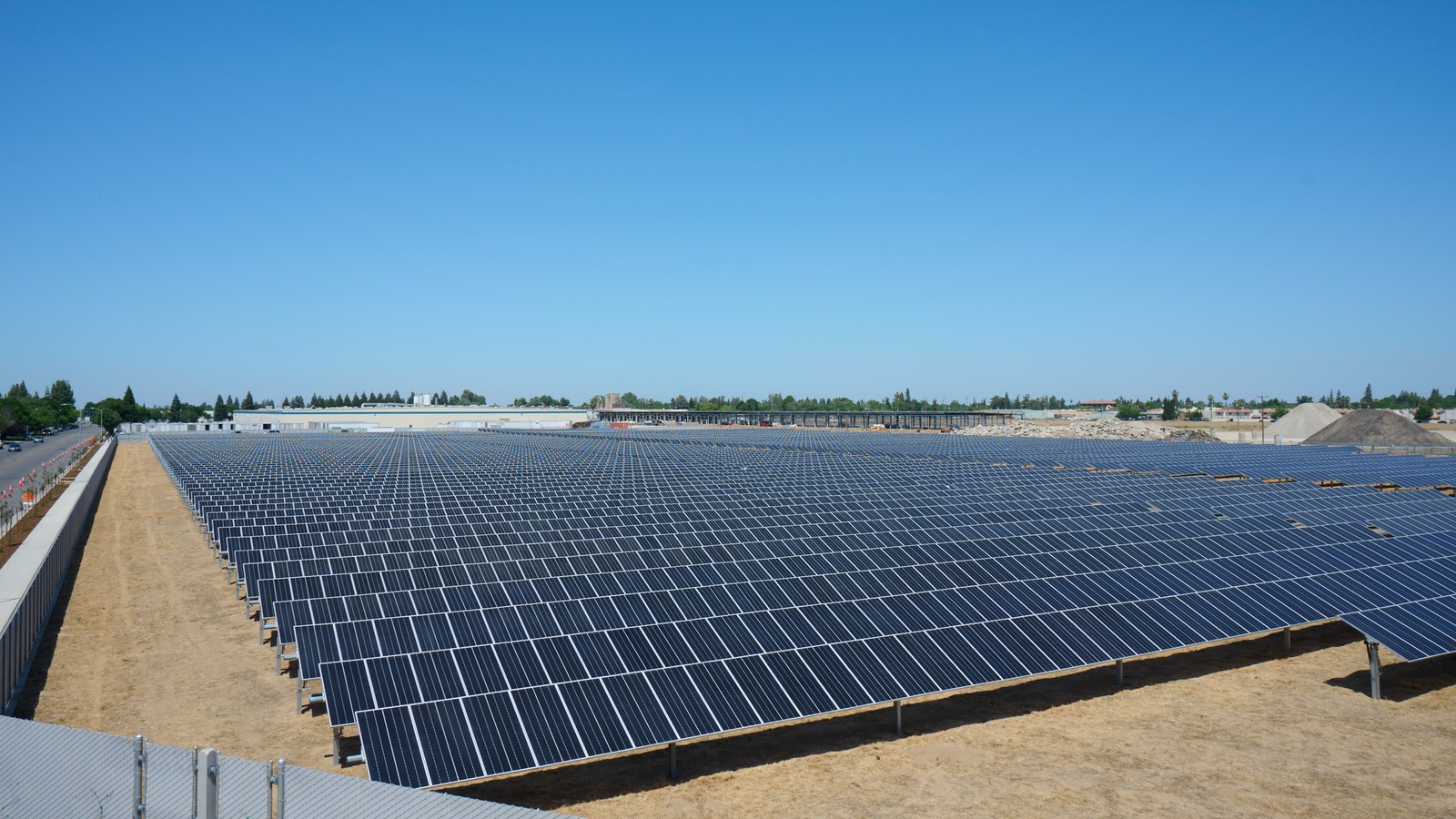
For Sealed Air Corporation, the $1 million annual savings it will realize from its recent investment in an 11-acre solar farm is just a perk that goes along with doing what’s right.
Toward a goal: “We always have sustainability in mind with everything that we do, whether it is a new product or a new facility,” said Sealed Air President of the Americas Tobias Grasso. “We always ask, ‘What is this bringing to us?’ and ‘How is this advancing our mission to leave our world better than we found it?’ Because we have a stated goal to be net-zero carbon neutral in our operations by 2040, we want to make sure that all our investments are in line with that strategy.”
- Earlier this year, a $9 million solar installation at Sealed Air’s Madera, California, manufacturing facility began generating electricity—at a rate capable of fulfilling 98% of the plant’s electricity needs, according to company calculations.
- The solar farm is integrated into the legacy power system so that system has a backup energy source when needed.
The right site: Sealed Air, the maker of the iconic Bubble Wrap® original cushioning and numerous other automation, packaging and digital printing solutions, started making plans for the 8,975-solar-panel farm in 2020. It chose the Madera location as the site for several reasons.
- “We have fairly extensive energy needs for that facility,” Grasso said. “And we had the available land and a good number of hours [of available sunlight] to provide the solar energy.”
- The manufacturer partnered locally with a team from TotalEnergies—a French company that recently acquired SunPower Commercial and Industrial Solutions—on the project.
The impact: Though the company got its solar installation up and running in less than two years, its effect on the environment will be long-lasting and far-reaching.
- The solar panels will prevent 5,000 metric tons of carbon dioxide emissions in just their first year in operation.
- Over the course of 15 years, that’s the greenhouse gas emissions equivalent of driving 15,000 cars for one year, Grasso said.
Solar-power advice: Manufacturers with the right energy needs, land and daily hours of sunlight could benefit from investment in their own solar installations, according to Grasso.
“First, you have to look at the dimensionality of your power needs; you have to look at the economics,” he said. “It’s a good idea to have a partner like TotalEnergies because they can help you through their experience so you model it the right way.”
